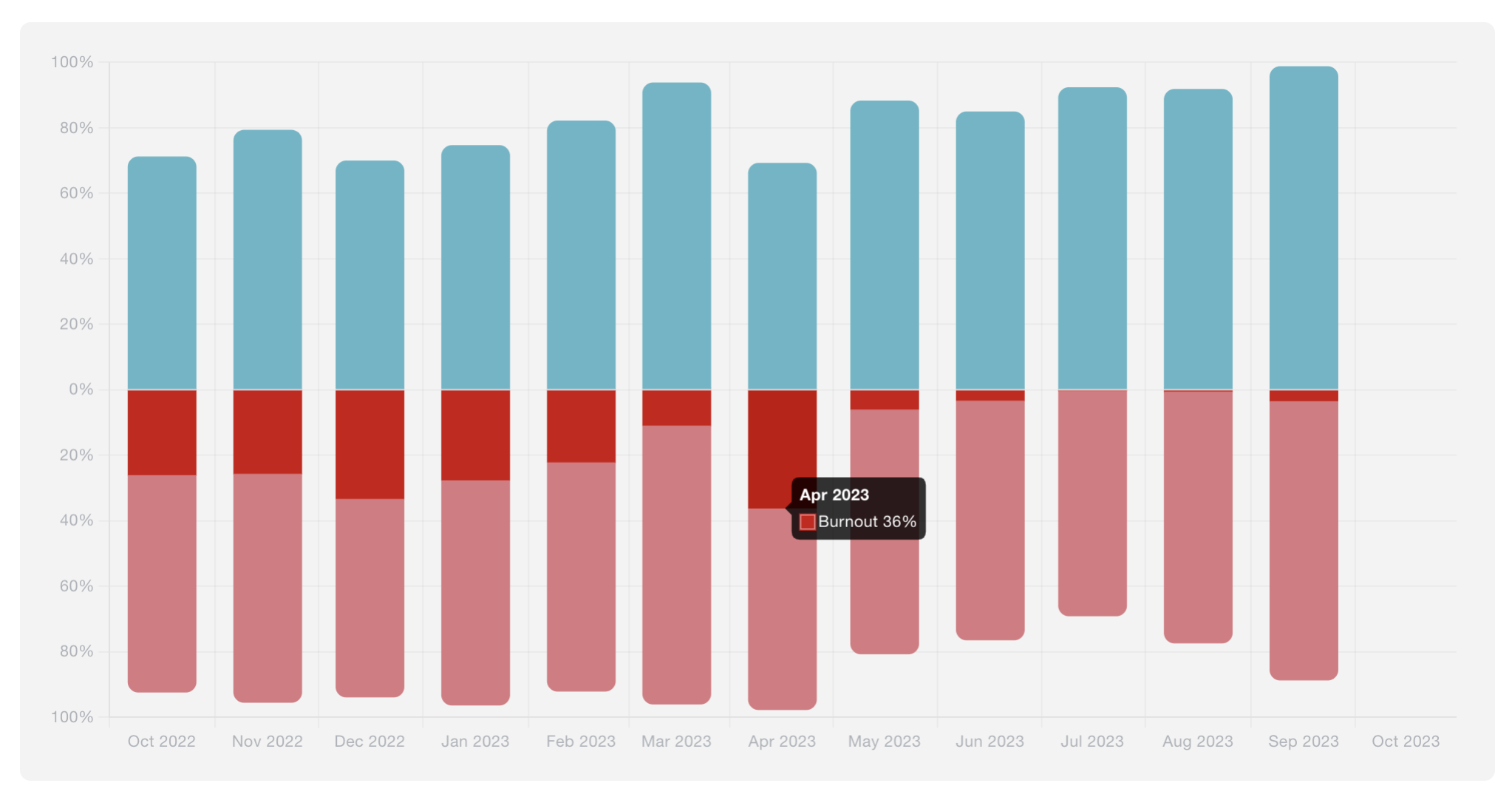How to measure burnout in percent
Professional burnout is usually understood as the accumulation of chronic fatigue and emotional stress. Moreover, this can happen even if things at work are going well, but the employee constantly thinks about tasks, holds work meetings, in general, is deeply involved in work.
Burnout doesn't occur like "Bam, I'm burnt out." It has a cumulative effect, so our sacred duty is to check how much fuel is left in our tank so that we don't suddenly stop halfway.
How Ploito measures burnout?
At the end of the workday, an employee can assess their condition based on two parameters: how tired they are and how satisfied they are, on a scale from 1 to 10.

If the employee notes that the level of satisfaction during the working day is higher than the level of tiredness, then we consider that today did not contribute to their burnout.
If the employee notes that they are very tired but not satisfied, Ploito will count this as burnout (using a special formula).
The situation where the employee is maximally satisfied and maximally tired is also considered a minor burnout.
The employee's burnout is visible not only to the employee themselves on their chart but also to their employer. On the chart, you can see a breakdown by months and days. The blue stripe represents satisfaction, the pink one represents tiredness. Employees enter these ratings manually. The red stripe represents the level of burnout, calculated using a special formula. This way, day by day, month by month, you can track the level of burnout.

For convenience, circular diagrams are also displayed.

What to do if an employee is experiencing burnout?
The employer or HR manager should pay maximum attention to this metric and analyze it comprehensively: what tasks the employee performs, how they comment on their fatigue, etc. In addition to satisfaction and tiredness ratings, the employee can write a comment with their impressions of the past day and mark completed tasks in their to-do list.
Thus, the employer can view the employee's reports and see the situation more clearly. For example, if an employee planned to finish a task but it turned out to be challenging and remained unfinished, the employee's comment might be "Struggled all day but made very little progress," along with the maximum tiredness rating and the minimum satisfaction rating.
This is the first signal to talk to the employee.
- First, explain that complex tasks are better divided into smaller ones to see noticeable progress on the task.
- Second, help with the task itself. Perhaps the employee lacked knowledge or experience, and the manager or senior colleagues can help.
- Third, show that you are there, and the well-being of your employee is important to you.
Attention and care for an employee only lead to positive results and reduce burnout. If you work in an office, you can simply approach a colleague and chat, exchanging a few phrases and supporting each other. Remote work often distances us; we smile at each other less and communicate less frequently. Calls often lead to unnecessary stress and consume time, and scheduling calls turns into endless coordination.
We believe that by working in a remote virtual office, an employer can identify employee burnout at an early stage. And also, we have a short video where in 2 minutes, you'll learn the most important things about Ploito!